 |
|
Merely A Facade
DC's Old Downtown Becomes Main Street U.S.A.
10/1/2005
Ever since The Rhodes Tavern Affair of 20 years ago, in which one of the oldest and most historic structures (1) in Washington was demolished to make way for an office building, developers in downtown DC have stepped into a trend of leaving a bit of the past unerased. Instead of tearing down old buildings, they now incorporate them in whole or in part into the new ones. This is, no doubt, to avoid costly legal battles with preservationists who had Oliver Carr down for the count a couple times before he was finally able to put Rhodes to the ball.
The results of incorporation are mixed, mostly blah. For the old buildings not to clash with the new ones, a lot of their charm --100-year-old signs and billboards for long-gone automobile makes--is sandblasted away or painted over. Often the finished product looks contrived like Disney's Main Street USA.
|
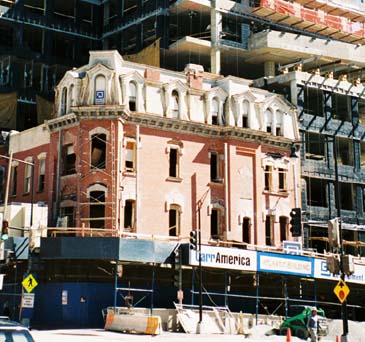 |
| Blocks of old three and four-story buildings that haven't been turned into facades are becoming rare in downtown DC. Here a long-boarded-up Victorian structure is becoming part of the office building looming behind. Note the builder is Carr who got away with tearing down Rhodes Tavern. As they are gutted, downtown buildings have given up some interesting secrets: stuff left behind by Clara Barton in an office she occupied after The Civil War, the remains of a soldier who disappeared in 1968. |
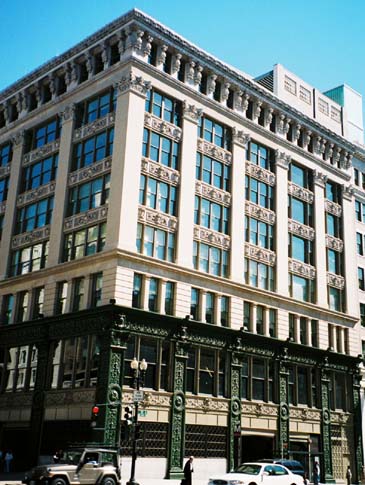 |
| In the heart of what was DC's shopping district, the early 1900s Woodies (Woodward & Lothrop) department store building has been preserved nicely. Although come Christmas, one won't be able to go down and see the famous animated window displays that Woodies featured every year. |
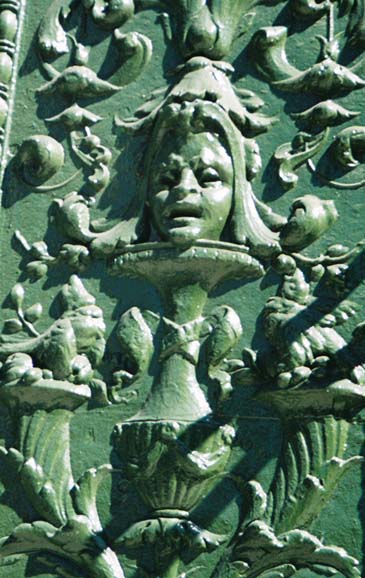 |
| A close-up of one of the Woodies Building's art-nouveau cast-iron columns cast by Snead & Co. Ironworks of Jersey City (It says so on the bottom.). |
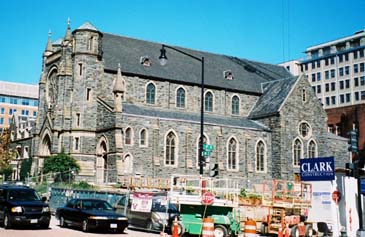 |
| It took about 25 years in the late 19th Century to build St. Patrick's Church. Soon it will be overshadowed by a new office building, the construction of which is causing cracks in St. Pat's walls. The new edifice is going up on the probable site of the original St. Patrick's built in 1792. God knows what artifacts have been hauled off in dump trucks. The blue sky and bright sunshine is being diminished, too, as downtown becomes a grid of canyons. |
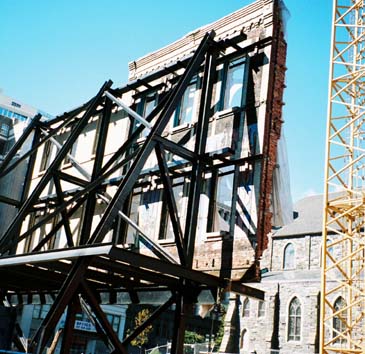 |
| Another view of the site next to St. Patrick's. Two partial front walls of 19th-Century buildings are held up by elaborate steel framework. Seems kind of silly to go to all this trouble for a scrap of wall. |
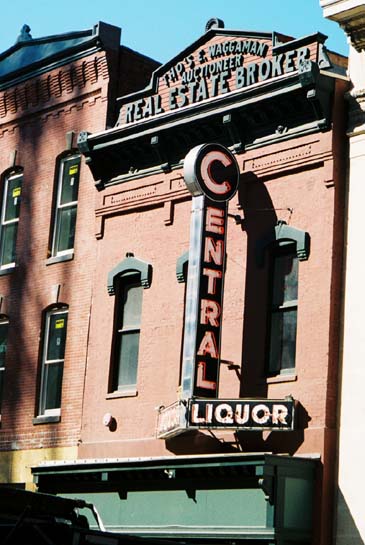 |
| And now for some old buildings still intact...for the time being. Above is an 1880s-era two-story with a 1940s neon sign. The cornice at the top still bears the name of the original occupant. |
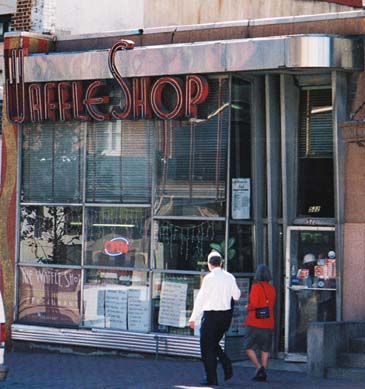 |
| Another cool neon sign from the '40s proclaims this 1-story art deco diner. It survives because it's two doors up from "The House Where Lincoln Died" and enjoys the indirect protection of the National Park Service. That's Ford's Theatre reflected in the plate glass. |
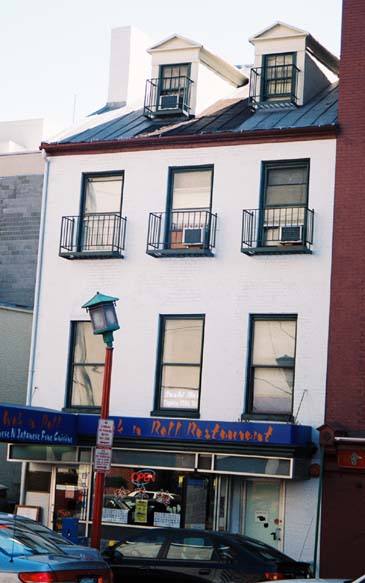 |
Here's a house typical of those built in DC from the 1790s-1850s. In 1865, this particular dwelling belonged to Mary Surratt and it is where she, John Wilkes Booth and others plotted Lincoln's assassination. Today, in the heart of Chinatown, it is a dispensary of Moo Goo Gai Pan. What appears to be the second story was originally the first. One of the three windows --was once a door with steps leading up to it.
--------------------------------------------------
(1) In its last decades, Rhodes Tavern on 15th St., NW, across from the Treasury, was a Rexall Drug Store, but in August of 1814, it was an inn from which invading British soldiers watched the Executive Mansion (White House) burn. Another loss was the RKO Keith's Theatre next door.
See also Gallery Place and Metro Memories.
|
| Copyright © 2005 by Neal J. Conway. All rights reserved.
Make homepage nealjconway.com appear in this window
|








